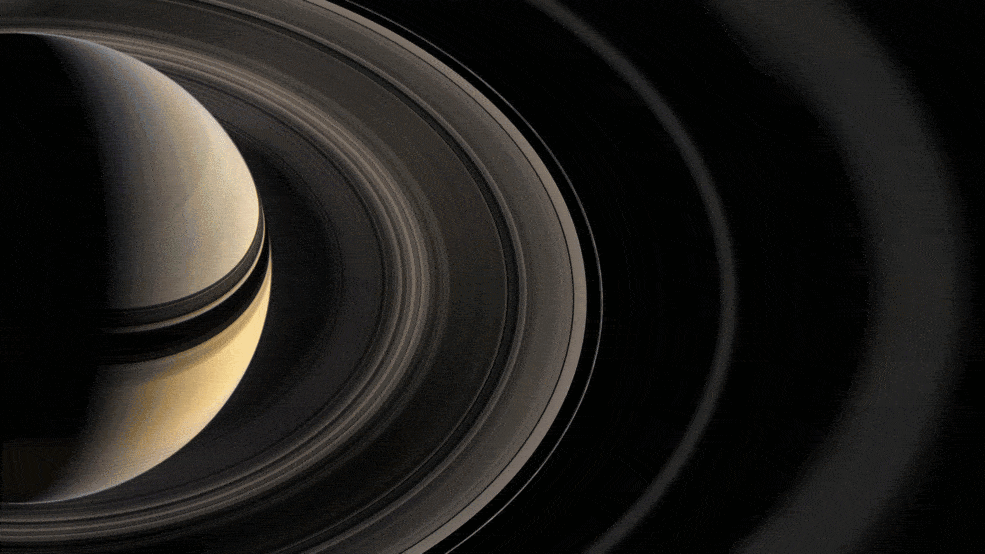The Cassini spacecraft, which has already had a helluva ride, is preparing for an exciting stage: studying Saturn’s rings.

Saturn’s rings were named alphabetically in the order they were discovered. The narrow F ring marks the outer boundary of the main ring system.
Credits: NASA/JPL-Caltech/Space Science Institute
After more than 19 years, 300,000 mind-blowing images and the discovery of seven moons, Cassini is starting its swansong. After orbiting Saturn since 2004 and making numerous dramatic discoveries including a global ocean within Enceladus and liquid methane seas on Titan, Cassini is preparing for its final maneuvers.
“We’re calling this phase of the mission Cassini’s Ring-Grazing Orbits, because we’ll be skimming past the outer edge of the rings,” said Linda Spilker, Cassini project scientist at NASA’s Jet Propulsion Laboratory, Pasadena, California. “In addition, we have two instruments that can sample particles and gases as we cross the ringplane, so in a sense Cassini is also ‘grazing’ on the rings.”
By April 2017, Cassini is expected to dive through the unexplored region at the outer edge of the main rings 20 times, a region where no other spacecraft has even attempted to go. During these flybys, Cassini will also gather sample ring particles and molecules of faint gases that are found close to the rings. This is the closest we’ve ever gotten to Saturn and its rings.
The thing is, Cassini was never really designed for this but its mission was so successful that NASA just aimed higher and higher. We at ZME Science have written no less than 271 articles on Cassini’s work, and by now it’s without a doubt one of the most exciting scientific missions ever undertaken. But even so, Cassini is not safe.
“I am a little unsettled by what we are going to try and do as far as the science is concerned because neither the instrument nor the spacecraft were designed to do this,” said Michele Dougherty,” professor of space physics at Imperial College London and lead for Cassini’s Magnetometer. But for the moment, she is confident and looking forward to the task.
“We are going to try and understand what is going on in the interior of Saturn and we are going to try and work out how long a day on Saturn is – it is a bit embarrassing, but we still don’t know, “said Dougherty. “You use the magnetic field, which is what my instrument measures, to almost see inside the planet.”
If that goes fine, then Cassini, which is running quite low on fuel, will enter its final stage. After April 2017, it will start making maneuvers to dive towards Saturn, preparing its mission-ending plunge into the planet’s atmosphere on Sept. 15. The design and success of the spacecraft remains an inspiration for future missions









